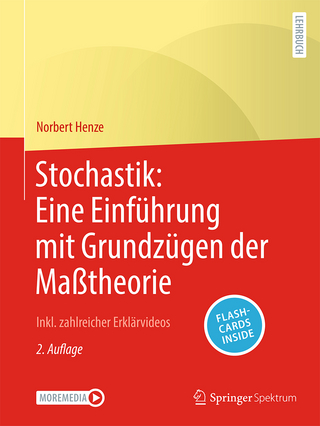
Time-Dependent Fracture Mechanics
Springer-Verlag New York Inc.
978-1-4612-6537-5 (ISBN)
1. Structural-Integrity Assessment: The Relevant Fracture-Toughness Evaluation.- 1.1 The Energy Approach: The Ductile-to-Brittle Transition (DBT) and the Fracture Analysis Diagram (FAD).- 1.2 Low-Toughness Materials.- 1.3 Determination of Dynamic Fracture Toughness by Instrumented Pre-Cracked Charpy Impact Testing.- 1.4 The Ductile to Brittle Transition and Fracture Toughness.- 1.5 Measurement of Flow and Fracture Behaviors Using Miniature-Scale and Compound Specimens.- Appendix I: The Constraint Issue.- Appendix II: Warm Pre-Stressing Effect.- Appenidix III: Choice of Steel Qualities with Regard to the Risk of Brittle Fracture.- 2. Structural Integrity Assessment: The Relevant Loading Evaluation.- 2.1 Procedures for Pure Mechanical Loading at Low Temperature.- 2.2 Procedures for Combined Loading.- 2.3 Safety Margins.- 2.4 Assessment Methods at High Temperature.- Appendix I: Probabilistic Integrity Analysis of Mechanical Components.- 3. Dynamic Fracture: Elementary Dynamics and Microscopic Fracture.- 3.1 Dynamic Behavior of a Material.- 3.2 Fracture Micromechanisms.- 4. Dynamic Fracture: The St Ationary Crack.- 4.1 Linear Elastic Analysis of the Two—Dimensional Crack.- 4.2 Crack Speed and Thermal-Field Measurements.- 4.3 Testing Methods and Fracture Criteria in Mode 1.- 4.4 Main Results on Toughness.- 4.5 Local Approach to Fracture and Continuum Damage Mechanics.- 4.6 Testing Methods and Fracture Criteria in Mode II.- 4.7 Mixed-Mode Dynamic Crack Initiation.- 5. Dynamic Fracture: The Moving Crack.- 5.1 Linear Elastic Modeling of Crack Growth.- 5.2 Elastic-Plastic Modeling ofCrack Growth.- 5.3 Mechanistic Models of Crack Growth.- 6. Creep Fracture: Creep Laws And Elementary Microscopic Fracture Models.- 6.1 Creep Flow Behavior.- 6.2 Mechanistic-Creep Failure Analysis.-6.3 Fracture Parameters.- 6.4 Continuum-Damage Mechanics.- Appendix I.- Appendix II.- Appendix III.- 7. Creep Fracture Mechanics.- 7.l The Stationary Crack.- 7.2 The Moving Crack.- 7.3. Relationship Between Micromechanisms and Macromechanics.- 7.4. Recommended Practice for Determining Creep-Crack Growth in a Material.- 7.5. The Stationary Crack Under Mixed-Mode Loading.- 8. Fatigue and Creep-Fatigue.- 8.1 Fatigue, Creep, and Creep-Fatigue Damage.- 8.2 Fatigue, Creep, and Creep-Fatigue Crack Propagation.- Guide for Further Reading and Bibliography.- Answers to Selected Exercises.
| Reihe/Serie | Mechanical Engineering Series |
|---|---|
| Zusatzinfo | XXVI, 459 p. |
| Verlagsort | New York, NY |
| Sprache | englisch |
| Maße | 155 x 235 mm |
| Themenwelt | Mathematik / Informatik ► Mathematik ► Wahrscheinlichkeit / Kombinatorik |
| Naturwissenschaften ► Physik / Astronomie ► Mechanik | |
| Technik ► Maschinenbau | |
| ISBN-10 | 1-4612-6537-1 / 1461265371 |
| ISBN-13 | 978-1-4612-6537-5 / 9781461265375 |
| Zustand | Neuware |
| Haben Sie eine Frage zum Produkt? |
aus dem Bereich


